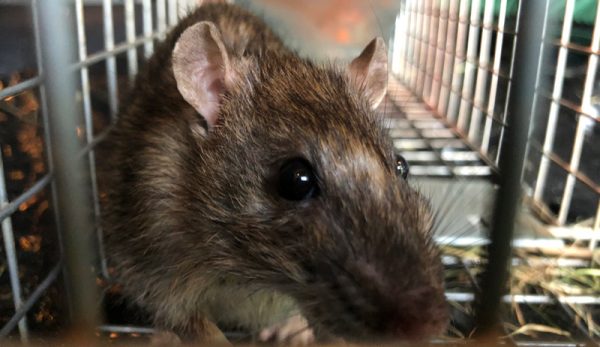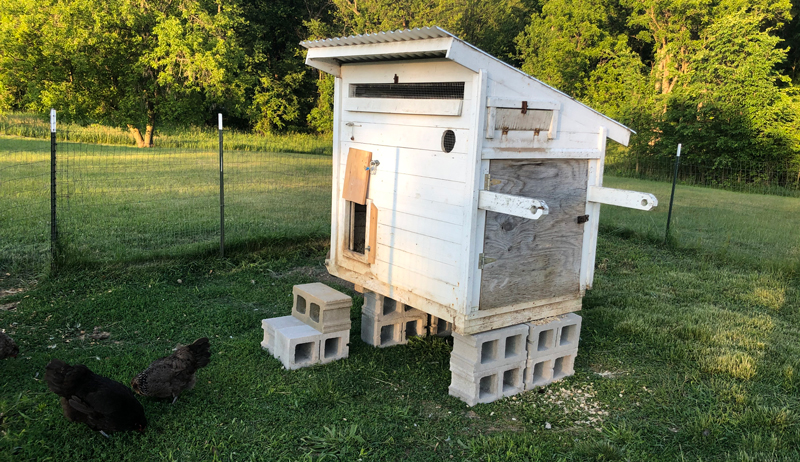
Poultry-keeping has a plethora of positives about it, but downsides also exist. Predators are the key negative for chicken keepers, who have to ensure their farming practices don’t leave the door—figuratively and literally—open for unwelcome visitors.
Raccoons, opossum, foxes and weasels can all wreak havoc on a small flock. But these animals’ strategy is hit and run.
What if the predator sets up house right where food, water and shelter can easily be had? This highly intelligent predator also tends to be tenacious, not to mention trouble.
Welcome to the world of rat infestation.
About the Rat
While the innocuous woodrat has called North America its habitat for millions of years, the Norway, or brown, rat (Rattus norvegicus) and the roof, or black, rat (Rattus rattus) are relatively recent arrivals. They accompanied settlers from Europe to the New World in the 17th and 18th centuries.
These two species of rodents quickly spread throughout the continent, claiming as their habitat any territory inhabited by man.
Both species are extremely prolific breeders. A female Norway rat gives birth to approximately 80 offspring per year. Her roof rat counterpart can produce about 40 offspring per year.
The Norway rat lives in a system of burrows, while the roof rat prefers elevated locations such as trees. Both species of rats have poor eyesight but excellent senses of taste and smell and can gain entrance to any structure through holes as small as 1/2 inch in diameter.
They easily gnaw through wood and plastic and have been known to swim through sewers and enter buildings through drainpipes. Rats are nocturnal creatures, highly adaptive and omnivorous.
Follow these precautions to protect your chickens from predators.
The Dangers of Rat Infestation
Rats pose a significant danger to human health due to the infectious diseases they carry. Humans can contract such illnesses as hantavirus, ratbite fever, salmonellellosis and lymphocytic choriomeningitis.
Rats also may carry parasites that can spread such diseases as bubonic plague, Lyme disease and typhus. Rats are also a threat to a healthy flock, as they can contaminate both feed and water with their urine, feces and hair.
In addition to the dangerous diseases they spread, rats also eat eggs, chicks, juveniles and small adults. Occasionally, they will pull the carcasses into their burrows or other concealed locations to feed their colony.
Signs of Rat Infestation
Rat droppings are a telltale sign of rat infestation. These range in size from one-half to three-quarters inch and are dark and moist.
Norway rat droppings are larger and banana shaped. Roof rat droppings are thinner and shaped like a clipped finger nail.
Rat droppings are usually found near burrow entrances and along the routes, or runways, they use to reach their sources of food and water. If their source of water also happens to be your flock’s, droppings may be found around—or in—your feeders and waterers or in your nestboxes, if the rats have been eating eggs.
Gnaw marks on coops, feed sacks and storage containers are also signs of a rat infestation. So are burrow holes in and around your coop and run.
Finally, sighting a rat crawling along a barn rafter or tree branch or running alongside a fence line or building is a dead giveaway. And if you see these nighttime creatures roaming during the day, you can be sure that the local colony is highly populated.
Eliminate Sources of Food and Water
The first step to eradicating rats is to stop providing a restaurant service. Remove feeders and waterers from your coops and runs at dusk and clean up any spilled rations.
Store your feed in tightly lidded metal containers. You can also use heavy-duty, lidded plastic totes, but you will need to inspect these regularly as rats can chew through plastic.
If you give your flock kitchen scraps, clean anything left uneaten before dark or the rats will find it. Do not leave pressed seed or suet cakes or other “boredom busters” in any area your chickens frequent, as these will attract the rats as well.
Similarly, do not leave pet food or wild bird feeders outside overnight. The rats’ keen sense of smell will quickly locate these.
If you store your household garbage outside, keep it inside your garage instead. Regardless of location, keep your trash secure by storing it in rodent-proof containers. If you have fruit trees, pick ripe fruit frequently and do not leave fallen fruit on the ground.
Collect your hens’ eggs daily to remove that source of food as well. Finally, do not leave sprinklers on at night as these become a source of water for rodents. Check your garden hoses for any leaks that might create standing water from which rats can drink.
Weed Out Potential Nesting Materials and Hiding Places
While rats may use their own fur to line their nests, they will happily utilize anything at hand.
Avoid using straw or lawn clippings in your chicken runs. Not only can rats hide in these, but they will carry it down to their nests as lining.
Keep your lawn mowed to eliminate tall grasses where rats can hide, and be sure to trim or weed whack any plant growth taller than 12 inches near your coops, your run fence and other buildings.
Dryer lint blown out of vents is another favorite, so make certain to regularly check these openings. If possible, close them off with quarter-inch hardware mesh.
Eliminate piles of junk on your property. Rats love the hiding places clutter creates. Rats also frequently turn piles of firewood into dens, so keep your logs neatly stacked, at least 18 inches off the ground and well away from walls and fences.
If roof rats are a problem, trim any branches that overhang your coops and runs or touch overhead wires or other trees. And prune back any ivy growing on the walls or branches that drape down to the ground.
Check out these 11 bedding options for your run and coop.
Block Burrow Entrances
If Norway rats are an issue, a temporary measure is to block the entrances to its burrows—the many holes you may have found in your run or even around or in your coop.
While rats can chew through many substances, they cannot chew through steel. Carefully stuff steel wool (the kind available at hardware and home-improvement stores, versus the soapy kind used for scrubbing pots) into these openings. The rats will not be able to pass and will have to dig another way out.
Quarter-inch hardware mesh can also be used to block burrow entrances. These barricades will not last forever but will give you some time to evaluate your situation, especially if rats have tunneled into your dirt- or wooden-floored coop and you need to make repairs or completely replace your coop.
Reinforce Your Henhouse
The old adage holds true: The best defense is a good offense.
If you have identified the Norway rat as your predator, make your coop inaccessible by raising it at least one foot off the ground. If your coop has a wooden floor, inspect it for gnaw marks and replace any compromised wood. Cover all holes larger than a 1/2 inch with fine hardware mesh, then elevate it.
Sturdy concrete stanchions or even stacks of patio slabs will lift your henhouse off the ground and away from rat burrows. If you cannot elevate your dirt-floor coop, fortify it by enclosing the floor opening with quarter-inch hardware mesh. Make sure to screw this in a few inches up the coop’s walls so that the rodents cannot simply slip through between the edges.
If your coop is completely compromised by a rat infestation, build a new one that stands well off the ground. Once you’ve reinforced the structure, check your nestbox lids and coop doors. These tend to be made of thinner wood, which is easier for rats to gnaw.
Change your lids and doors out for thicker pine boards. Make sure the lids lock shut with latches and carabiners to deter raccoons and other predators. And make sure your coop door closes flush with no gaps that can be easily enlarged by strong rodent teeth.
Plan and Carry Out Your Attack
All of these precautions will make your property less inviting to rodents, but you still have to deal with the ones that are already in residence.
Snap traps are an effective counter measure to a rat infestation. If you have identified burrow entrances or runways, set snap traps up near these holes and heavily traveled areas.
Peanut butter, oatmeal and pet food can be used as bait, but we have had great success using chicken feed. Be certain that you do not set up the traps until your flock is locked up for the night and your pets are inside. A snap trap can seriously injure or even kill a curious animal.
Avoid using poisoned bait. Should a poisoned rat die away from its burrow, hungry wildlife—or your cat or dog—might become inadvertently poisoned should they find the carcass.
Like other sources of food, remove the traps during the daytime, preferably before a chicken decides to investigate it.
Electronic traps are also highly effective. These usually run on batteries, lure a rat in via ultrasonics, then zap it once it is inside.
Somewhat less effective are glue boards, which are similar to fly paper except for rodents. These work well for mice, but the larger rat can wrest itself out of this sticky situation.
Rodent Disposal
Disposing of a rodent requires extra precautions, due to the diseases and parasites it carries on its fur and skin. Use disposable gloves to pick up the body, then double bag it in plastic bags and place it in your garbage bin.
Do not leave a rodent in a trap for long, as it will draw insects that can spread any diseases the rat carried … and the carcass can end up a source of food for other rats and any scavengers you have in the area.




